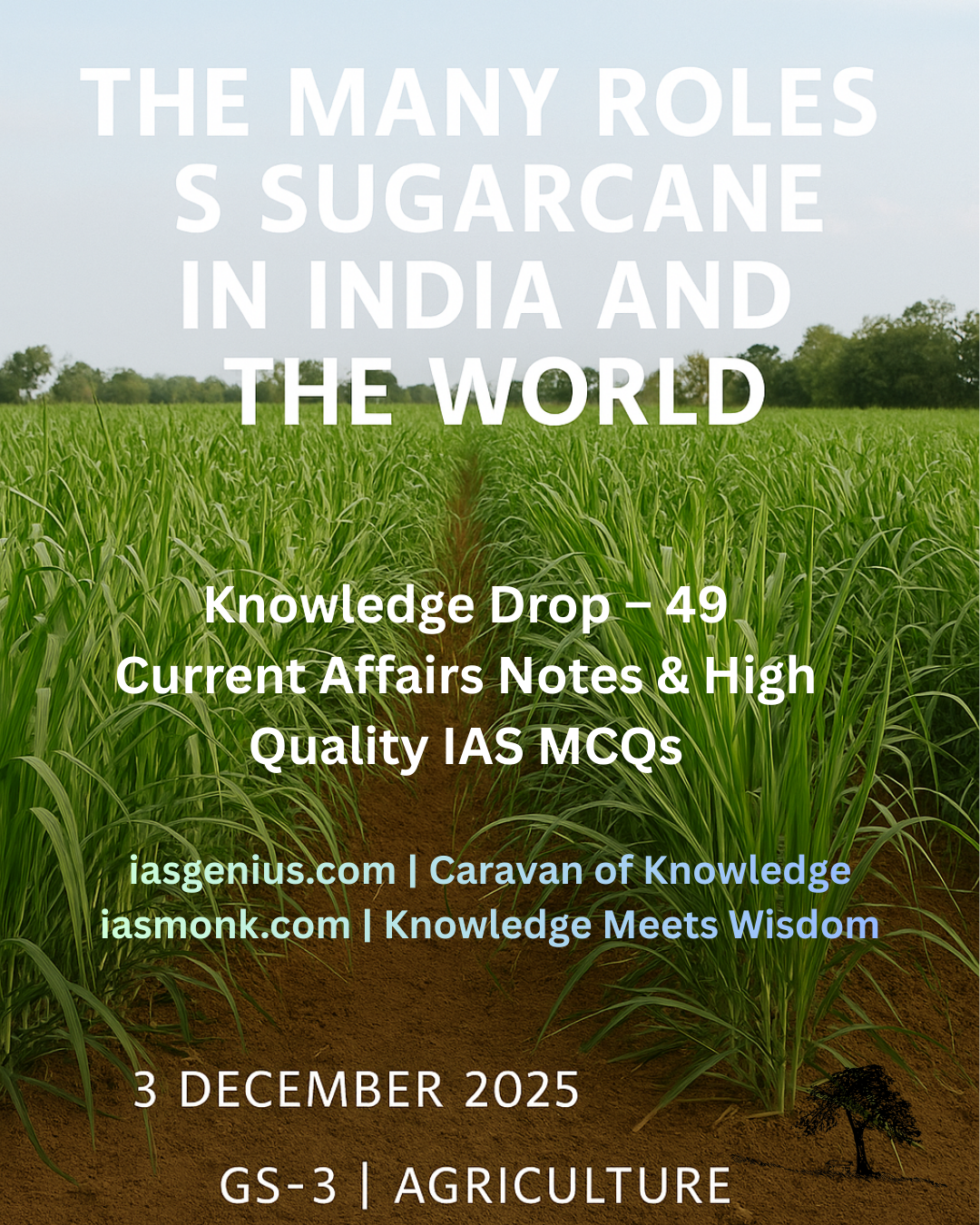
🧭June 26, 2025 Post 3: Snowflake Yeast and the Physics of Life: How Multicellularity May Begin Without Mutations | High Quality Mains Essay: The Physics of Life: How a Yeast Cell Illuminates the Origins of Multicellularity | For IAS-2026 :Prelims MCQs
Snowflake Yeast and the Physics of Life: How Multicellularity May Begin Without Mutations

NATIONAL HERO — PETAL 003
Post Date: June 26, 2025
Thematic Focus: GS3 – Science and Technology
🟡 Intro Whisper
Not all evolution begins in the genes. Sometimes, it begins in the flow of water, in the whisper of sugar, in the rise of something lighter than before. In the quiet lab of physics, life may have taken its first multicellular step.
🌸 Key Highlights
- Snowflake yeast grows in clusters due to inability of buds to separate — forming visible multicellular bodies.
- A new NCBS study finds that physical fluid movement, not just genetics, helps the cluster survive and grow.
- Advection (fluid flow) brings nutrients into the yeast cluster, sustaining growth beyond expected limits.
- This natural rise of lighter fluid (due to alcohol and CO₂ produced by yeast) explains nutrient circulation.
- Evolutionarily, this implies that physics alone could have enabled multicellularity, before mutations cemented it.
🧭 Concept Explainer
What is Snowflake Yeast and Why It Matters
Yeast, a normally single-celled organism, reproduces by budding. In Snowflake yeast, however, a mutation prevents separation of buds, forming clusters that mimic multicellular forms.
Surprisingly, these clusters thrive without internal transport systems like blood vessels.
The breakthrough study reveals that upward fluid flow caused by sugar breakdown and gas production enables nutrients to reach internal cells — a purely physical solution to a biological challenge.
This challenges the long-held belief that multicellularity needed complex genetic evolution, suggesting instead that physics may have provided the first scaffold.
🧮 GS Paper Mapping
- GS Paper 3:
• Science and Technology — Evolution and Biotechnology
• Emerging Research in Biology
• Role of Physics and Chemistry in Life Sciences
🌠 A Thought Spark — by IAS Monk
“Perhaps the first miracle of life was not written in DNA, but etched in the rhythm of rising fluid. Multicellularity, then, is not only a story of genes — but a choreography of molecules in motion.”
High Quality Mains Essay For Practice :
Word Limit 1000-1200
The Physics of Life: How a Yeast Cell Illuminates the Origins of Multicellularity
Introduction: Life Begins in a Whisper, Not a Code
Before genes began to script life’s destiny, something more primal moved — fluid, light, gravity, and the silent order of physics. A new study on Snowflake yeast from the National Centre for Biological Sciences (NCBS) rekindles this ancient idea — that life as we know it might have begun not with a mutation, but with motion. In a stunning revelation, scientists have discovered that fluid dynamics, not genetic evolution, enabled the yeast cluster to survive and grow — offering a profound glimpse into how multicellular life could have arisen through the choreography of physical forces alone.
This is not merely a study of yeast; it is a philosophical and scientific inquiry into the life of a cell, the architecture of early evolution, and perhaps even the non-biological origin of biological form.
The Snowflake Yeast: Biology’s New Philosopher
Yeast is a simple organism — a unicellular fungus that reproduces by budding. In most cases, after the bud forms and grows, it detaches and becomes an independent cell. However, in a variant known as Snowflake yeast, a genetic mutation prevents this separation, causing cells to remain attached and form visible clusters. Within hours, these clusters become large enough to be seen with the naked eye — resembling snowflakes in shape and structure.
For over a decade, Snowflake yeast has been used to study how unicellular life transitions into multicellular complexity. And yet, until now, a puzzle remained unsolved: How do inner cells, buried deep within these clusters, stay alive? In larger multicellular organisms, blood vessels or vascular systems carry nutrients to the interior. But Snowflake yeast has no such architecture.
The conventional assumption was that nutrient diffusion — the passive spread of substances from high to low concentration — was sufficient. However, diffusion only works efficiently up to a microscopic limit (about 50 micrometers). Beyond that, inner cells should starve. And yet, the yeast clusters kept growing.
Fluid Flow — Not DNA — Sustained Life
What NCBS scientists found was both elegant and astonishing: Advection, or bulk fluid movement, plays the key role.
Here’s what happens:
- The yeast consumes glucose (sugar) from the surrounding solution and produces alcohol and carbon dioxide.
- This chemical conversion makes the fluid surrounding the yeast cluster less dense than the fluid farther away.
- The less dense fluid rises naturally, like hot air in the atmosphere.
- This rising creates an upward flow, which pulls in fresh, nutrient-rich fluid from below and sides — feeding all the yeast cells, including those buried at the center.
This is physics performing the function of biology. Without blood vessels, without nerves, without any evolved organ — just density, movement, and geometry — life sustains itself.
A Deeper Question: What is the Minimum Requirement for Life to Evolve?
Until now, the dominant view in biology has been that genetic mutations drive the emergence of complexity. That multicellularity — like in plants, animals, or fungi — evolved only after countless random mutations, some of which enabled cells to specialize, cooperate, and communicate.
But this yeast study changes that story.
It suggests that physical forces could have created a survival advantage even before mutations took hold. Clustering, once seen as accidental or irrelevant, could now be understood as functionally beneficial, purely because fluid flow ensured nutrient access.
In this view, physics does not follow biology. Biology emerges from physics.
The Life of the Cell: Not Just Molecular, but Mechanical
Traditionally, we speak of the life of a cell in molecular terms: DNA, RNA, proteins, enzymes, ATP. But the living cell is also a physical body. It has volume, pressure, surface tension, adhesion, viscosity. It interacts with gravity, buoyancy, and flow. In fact, many of a cell’s earliest evolutionary constraints may not have been biochemical at all — but hydrodynamic.
This reminds us of a broader truth: Life is not just made of molecules. It is made of rules — the laws of motion, energy conservation, entropy gradients, and fluid circulation.
The Snowflake yeast becomes, then, a living model of early Earth, where life didn’t wait for complex innovation, but arose from simple participation in physical systems.
Philosophical Implications: When Structure Precedes Instruction
There is a quiet revolution here. For centuries, biology has privileged the instructional view of life — DNA as code, evolution as a gradual rewriting of that code. But what if, instead, structure came first?
Snowflake yeast teaches us that coherence — not code — may be the first gift of evolution. Cells sticking together, not because they plan to, but because it just happens — and once it happens, physics does the rest.
Evolution, then, is not only about what survives. It’s also about what physics supports, what geometry enables, what flow sustains.
This makes life a collaboration between chaos and constraint. Between randomness (mutation) and regularity (fluid motion). It’s not a war between biology and physics. It’s a symphony.
Revisiting Evolution: Beyond the Gene
Charles Darwin gave us natural selection. Molecular biology gave us gene-centric evolution. Snowflake yeast offers a third view — process-centered evolution.
In this view:
- Evolution is not just the accumulation of beneficial genes.
- It is the alignment of form with function, of structure with environment, of matter with motion.
- Multicellularity becomes not a genetic accident, but a consequence of hydrodynamic opportunity.
Over time, once the structure is in place, genetic changes may follow, stabilizing and improving the arrangement. But the first step — the leap from cell to cluster — may not need any gene at all.
The Larger Picture: Origins of Life, Other Planets, Synthetic Biology
This also reopens the conversation about the origins of life on Earth — and possibly elsewhere.
If physical principles like density gradients, fluid flow, and passive clustering can generate early metabolic advantages, then life becomes a likely consequence of planetary conditions, not a rare miracle.
In astrobiology, this means we may find early-stage multicellularity in places we thought sterile — not because of intelligence or mutation, but because of water and energy gradients.
In synthetic biology, this means we can build life-like systems that behave biologically without being genetically driven. In fact, we may already be doing so — in organoids, tissue scaffolds, and biochemical gels.
Conclusion: A Thought in the Flow
A cluster of yeast in a sugar solution seems like a trivial lab experiment. But within that cluster lies a whisper from the origin of life — a lesson that motion can create form, and physics can offer function.
Before life knew how to evolve, it learned how to float.
Before nature sculpted the gene, it stirred the waters.
And in the swirl of upward flow, in the rising lightness of used sugar, in the invisible lift of CO₂ bubbles, a kind of primordial choreography began — cells gathering, growing, breathing together — not by command, but by consequence.
This, too, is life. And it may be the most original life of all.
Target IAS-26: Daily MCQs :
📌 Prelims Practice MCQs
Topic: The Physics of Cells and Life
MCQ 1 – Type 1: How many of the above statements are correct?
Q. Consider the following statements about the Snowflake yeast study:
1. Snowflake yeast clusters form because a mutation prevents budding yeast cells from separating.
2. The yeast study shows that complex genetic evolution is the only path to multicellularity.
3. The study found that fluid movement, not just diffusion, helps supply nutrients to all cells in the cluster.
4. The rising of less dense fluid due to yeast activity creates an upward flow that supports growth.
How many of the above statements are correct?
A) Only two
B) Only three
C) All four
D) Only one
🌀 Didn’t get it? Click here (▸) for the Correct Answer & Explanation
✅ Correct Answer: B) Only three
🧠 Explanation:
•1) ✅ True – Snowflake yeast arises due to failure of cell separation during budding.
•2) ❌ False – The study shows physics (fluid flow) can initiate multicellularity even without genetic complexity.
•3) ✅ True – Advection, not diffusion alone, enables nutrient delivery throughout the cluster.
•4) ✅ True – Yeast releases alcohol and CO₂, lowering fluid density and triggering natural upward flow.
MCQ 2 – Type 2: Two Statements Based
Q. Consider the following statements about the scientific and evolutionary significance of Snowflake yeast:
1. The study supports the idea that fluid mechanics can sustain large cell clusters without internal transport systems.
2. The discovery disproves all previous theories regarding gene-driven multicellular evolution.
Which of the above statements is/are correct?
A) Only 1 is correct
B) Only 2 is correct
C) Both are correct
D) Neither is correct
🌀 Didn’t get it? Click here (▸) for the Correct Answer & Explanation
✅ Correct Answer: A) Only 1 is correct
🧠 Explanation:
•1) ✅ True – The study shows that physical fluid flow can keep inner cells alive without needing blood vessels.
•2) ❌ False – The study doesn’t disprove gene-driven evolution, it just shows that physical processes could precede genetic change.
MCQ 3 – Type 3: Which of the statements is/are correct?
Q. Which of the following mechanisms contribute to the growth of Snowflake yeast clusters, according to the study?
1. Yeast cells break down glucose and release alcohol and CO₂.
2. The surrounding fluid becomes denser, pushing nutrients downward into the cluster.
3. Advection allows nutrients to move deeper into the yeast cluster.
4. Natural upward flow is created by the rising of lighter, processed fluid.
Select the correct code:
A) 1, 2 and 3 only
B) 1, 3 and 4 only
C) 2, 3 and 4 only
D) 1, 2 and 4 only
🌀 Didn’t get it? Click here (▸) for the Correct Answer & Explanation
✅ Correct Answer: B) 1, 3 and 4 only
🧠 Explanation:
•1) ✅ True – Glucose breakdown by yeast creates alcohol and CO₂.
•2) ❌ False – Fluid becomes less dense, not denser; hence it rises, not sinks.
•3) ✅ True – Advection helps nutrients enter and circulate within the cluster.
•4) ✅ True – Rising of lighter fluid triggers nutrient-rich inflow from below.
MCQ 4 – Type 4: Direct Fact
Q. Which of the following best explains the term “advection” as used in the yeast study?
A) Movement of sugar molecules from low to high concentration inside the yeast cell.
B) Fluid motion caused by pressure imbalance within the yeast nucleus.
C) Bulk movement of fluid carrying nutrients into the yeast cluster.
D) Enzymatic digestion of alcohol by multicellular organisms.
🌀 Didn’t get it? Click here (▸) for the Correct Answer & Explanation.
✅ Correct Answer: C) Bulk movement of fluid carrying nutrients into the yeast cluster
🧠 Explanation:
•A) ❌ Incorrect – This describes active transport, not advection.
•B) ❌ Incorrect – Advection is not caused by intracellular pressure.
•C) ✅ Correct – Advection refers to bulk fluid flow, which supplies nutrients to interior yeast cells.
•D) ❌ Incorrect – Enzymatic digestion is unrelated to this concept in the study.


















